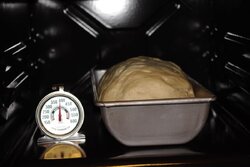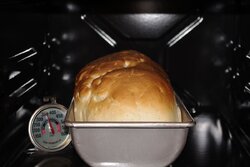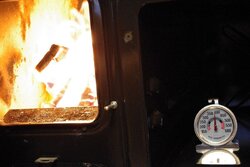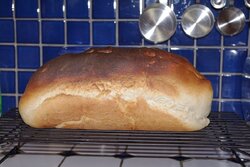How did your brother know that was the cause of the fire? How often did he have his chimney cleaned? Did he start his fire with a big wad of newspaper? Was his wood seasoned over a year? There can be a lot of causes of chimney fires. If you think your chimney flue is 600* in the middle of winter with a damped down fire, you are sadly mistaken.
I thought you said you never saw one on a wood stove but your brother had one?????
Like l said, you'll see a lot of people chime in with 'experiences' one way or the other even though they never used one.
I thought you said you never saw one on a wood stove but your brother had one?????
Like l said, you'll see a lot of people chime in with 'experiences' one way or the other even though they never used one.


 .
. I hope he had CO detectors down near that furnace too.
I hope he had CO detectors down near that furnace too.
 ! That's with the air inlet restricted! I used the damper to tone it down to a reasonable .05". At the high draft, the oven temp shot up to 500 degrees so it would take a very small fire to maintain a reasonable oven temp without the damper. It was much easier to control with a constant draft.
! That's with the air inlet restricted! I used the damper to tone it down to a reasonable .05". At the high draft, the oven temp shot up to 500 degrees so it would take a very small fire to maintain a reasonable oven temp without the damper. It was much easier to control with a constant draft.



 !
! . I got it for a great deal, $875. The only downside is that the flue is on the left hand side (so oven on the left, firebox on the right) ...Only one Geno had left and he did not see anymore coming in anytime soon. I figured, even though its very backwards to me, for the price it was worth it.
. I got it for a great deal, $875. The only downside is that the flue is on the left hand side (so oven on the left, firebox on the right) ...Only one Geno had left and he did not see anymore coming in anytime soon. I figured, even though its very backwards to me, for the price it was worth it.